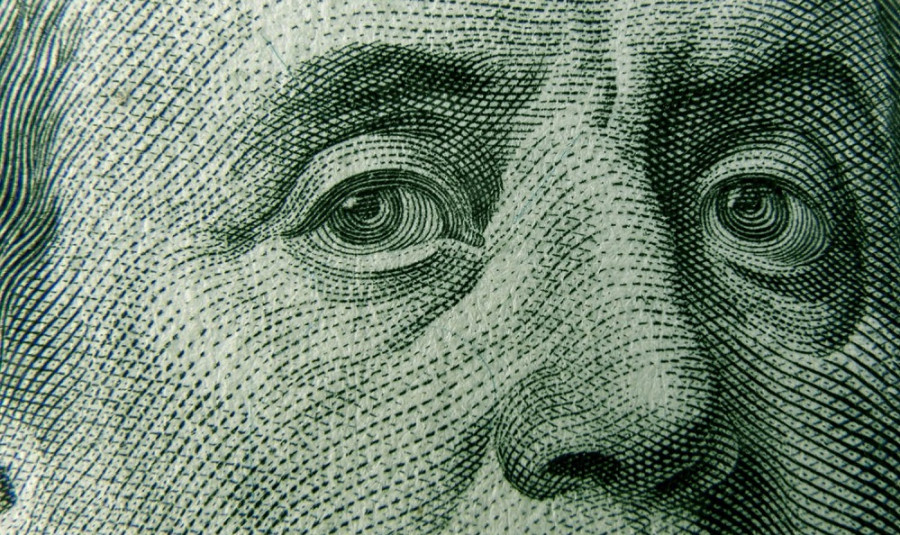The US released a series of important data on retail sales, labor market, and inflation at the start of the US session. All of these reports supported the greenback, making it possible for EUR/USD bears to regain initiative, and at the moment, they are trying to settle around the 1.08 level.
Let's start with the fact that the Federal Reserve is observing the "blackout period" - a 10-day period before the FOMC meeting when FOMC participants and staff are not allowed to speak publicly or grant interviews. Roughly speaking, traders are left to their own devices, as if unsupervised children. They have to interpret each release on their own, without any hints from the Fed.

For instance, the Consumer Price Index did ot provide much support to the greenback. The dollar strengthened its positions momentarily, but without much enthusiasm. The report failed to trigger a rally, despite being in the green zone. The CPI accelerated again on an annual basis - both in year-on-year terms (3.2%, instead of a decrease to 3.0%) and in monthly terms (0.4%). However, the core CPI decreased to 3.8% on an annual basis (with a forecasted decline to 3.7%).
Market participants concluded that the glass is half empty, meaning the report was more against the greenback than in its favor. In my opinion, the market arrived at a reasonable conclusion that this release will allow the Fed to maintain the status quo at the next two meetings (i.e. in March and May), while the June prospects of the rate cut are still in question (i.e., a 50/50 chance). However, the market had long priced in this initial scenario.
The latest data has cast doubt on this concept, especially since the Producer Price Index has entered the "green" for the second consecutive month. In January, the PPI decreased to 0.9% on an annual basis (most experts expected a more significant decrease, to 0.5%), while the core index, after three consecutive months of decline, accelerated to 2.0% year-on-year (forecast - 1.6%).
The February report merely reinforced the "January result." In monthly terms, the PPI has shown growth, rising to 0.6% (against a forecasted increase of 0.3%) - the highest growth rate since August 2023. On an annual basis, the PPI increased to 1.6% (compared to a forecast of 1.1%) - the strongest growth rate since September 2023. The core index also remained in the "green": both on a monthly basis (0.3% against a forecast of 0.2%) and on an annual basis (2.0% against a forecast of 1.9%).
So, we can talk about a certain trend here.
On the one hand, the retail sales report came out in the "red," falling short of forecasted values. On the other hand, the volume of retail sales increased, although it wasn't groundbreaking. For instance, total sales volume increased by 0.6% (the highest value since September 2023). Excluding automobile sales, the indicator grew by 0.3%, whereas in the previous month, negative dynamics were recorded (sales volume decreased by 0.8%). Therefore, the February result also works in favor of the greenback.
The number of initial claims for unemployment benefits increased by 209,000 (compared to a forecast of 218,000). This indicator has been decreasing for the second consecutive week.
The oil market also provided indirect support to the dollar. Oil prices have risen again - Brent is currently trading above $85 per barrel. Experts surveyed by Reuters attribute this dynamic to sustained demand in the US, following gasoline inventories reaching a 3-month low due to export growth. In addition, market participants' concerns about supply disruptions due to attacks on Russian oil refineries played a role.
It is clear that expensive oil could once again fuel inflation (if price increases are sustained rather than impulsive and short-lived). Such concerns favor dollar bulls.
Thus, the latest PPI data intensified the intrigue regarding how hawkish the rhetoric of US central bank members will be at the upcoming meeting, the results of which we will learn next week - March 20th.
However, despite the dollar's broad strength, it is too early to speak about a trend reversal. Bears have pushed below the support level of 1.0890 (the Tenkan-sen line on the daily chart), paving the way to the next support level at 1.0860 (the middle line of the Bollinger Bands on D1). For a more significant downward movement, sellers need to break the support level of 1.0830 (the lower border of the Kumo cloud, coinciding with the Kijun-sen line on the same timeframe). In this case, the price will be between the middle and lower Bollinger Bands lines and below all the lines of the Ichimoku indicator, which will form a bearish "Parade of Lines" signal. In this scenario, we can talk about more ambitious targets. The first one is the 1.0750 level, corresponding to the lower Bollinger Bands line on the D1 timeframe.
The material has been provided by InstaForex Company - www.instaforex.comfrom Forex analysis review https://ift.tt/uRT0i4p
via IFTTT
